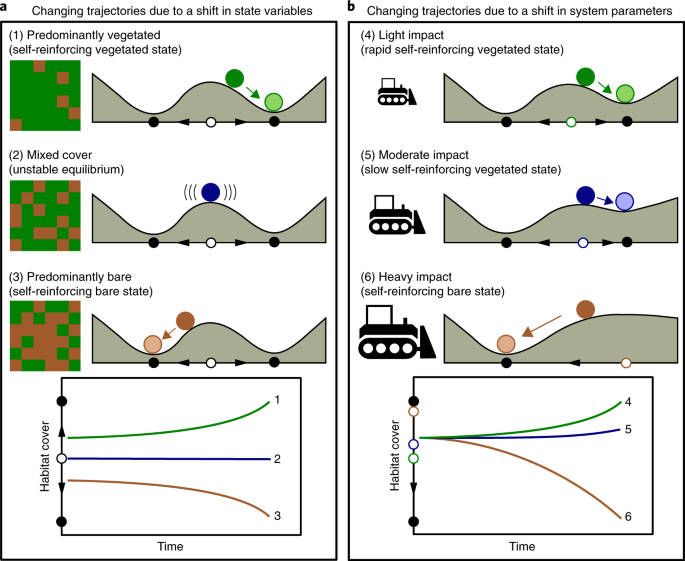Maintaining your lawn mower can be a costly and time-consuming task, but with a little know-how, you can significantly reduce those maintenance expenses. In this article, we will explore some simple yet effective ways to minimize the costs associated with keeping your lawn mower in top shape. By following these tips and tricks, you’ll not only save money but also ensure that your lawn mower remains reliable and efficient for years to come. So, let’s jump right in and discover how you can cut down on those lawn mower maintenance costs.
Regular Cleaning
Clean the Deck
It is essential to regularly clean the deck of your lawn mower. Grass clippings, dirt, and debris can accumulate on the deck, hindering the blade’s performance and increasing the risk of corrosion. To clean the deck, you can start by removing the spark plug wire for safety. Then, using a brush or hose, scrub away the grass clippings and dirt from the deck’s surface. Make sure to reach all the nooks and crannies. Once the deck is clean, dry it thoroughly before moving on to the next maintenance task.
Clear the Clippings
After mowing the lawn, it is crucial to clear out the grass clippings that have collected in the mower’s bag or discharge chute. Leaving clippings inside the mower not only impairs its efficiency but can also cause unpleasant odors or even lead to clogging. You can remove the bag and dump the clippings into a compost pile or use them as mulch in your garden. If your mower has a discharge chute, ensure it is free from clippings before storing the equipment.
Clean or Replace the Air Filter
The air filter plays a vital role in preventing dust, dirt, and debris from entering the engine and causing damage. Over time, the air filter can become clogged, reducing its effectiveness and potentially leading to engine performance issues. Check the air filter regularly and clean it with compressed air or replace it if necessary. Keeping a clean air filter will ensure optimal airflow and enhance the overall performance and longevity of your lawn mower’s engine.
Proper Fuel Management
Use Fresh Fuel
Using stale fuel can have detrimental effects on your lawn mower’s engine. Fuel that has been sitting for an extended period can lose its combustibility, making starting the mower challenging and increasing the risk of engine damage. Whenever possible, use fresh fuel when refilling your mower’s tank. If you have fuel left over at the end of the mowing season, consider using a fuel stabilizer to prevent it from going stale.
Don’t Overfill
Overfilling the fuel tank can lead to spillage and potential safety hazards. It is crucial to avoid filling the tank to the brim, as fuel can expand with temperature changes, causing overflow and fuel leakage. To prevent these issues, only fill the tank to the recommended level indicated by the manufacturer. This not only ensures safe operations but also avoids unnecessary fuel wastage.
Drain the Fuel at the End of the Season
Before storing your lawn mower for an extended period, it is advisable to drain the fuel from the tank and the carburetor. Storing fuel in the mower can lead to the formation of deposits, clogging the fuel system and impeding the engine’s performance. To drain the fuel, run the mower until it runs out of gas or use a siphon to extract the fuel. This simple step prevents fuel-related issues and promotes a smooth start when the next mowing season arrives.
Sharpen the Blades
Check Blade Condition
Blades that are dull or damaged can tear the grass instead of providing a clean cut. To ensure your lawn mower delivers an even and professional-looking cut, regularly inspect the condition of the blades. Look for signs of wear, such as nicks, dents, or uneven edges. If the blades are significantly dull or damaged, it’s time to move on to the sharpening process.
Remove and Sharpen the Blades
Sharpening the blades is a crucial step in maintaining a healthy lawn. If the blades are not sharp, they can stress the grass, leaving it vulnerable to diseases and pests. To sharpen the blades, first, safely remove them from the mower. You may need to turn the mower on its side or use a blade removal tool. Once removed, secure the blade in a vise and use a file or grinder to sharpen the cutting edge. Ensure that you maintain the blade’s original angle and remove any burrs. Repeat the process for all the blades.
Proper Blade Reinstallation
After sharpening the blades, it is important to reinstall them properly. Ensuring correct installation prevents any balance issues or potential accidents during operation. Align the blade with the mounting holes and tighten the bolts or nuts securely, following the manufacturer’s specifications. Double-check that the blades are securely fastened before using the mower again. Remember to always prioritize your safety when handling sharp objects and follow the manufacturer’s instructions.
Check and Maintain the Oil
Check the Oil Level
Regularly checking the oil level in your lawn mower is essential for optimal engine performance. Low oil levels can cause excessive friction and heat, leading to premature wear and potential engine damage. To check the oil level, make sure the mower is on a level surface, remove the dipstick, wipe it clean, and reinsert it fully into the oil fill tube. Remove the dipstick again and check the oil level against the recommended range. If the oil level is low, add the appropriate type and amount of oil as specified in the mower’s manual.
Change the Oil Regularly
Changing the oil at regular intervals is crucial for maintaining a healthy lawn mower engine. Over time, oil can become contaminated with dirt, debris, and combustion byproducts, reducing its lubricating properties. Refer to the owner’s manual for the recommended oil change intervals. Generally, it is advisable to change the oil after every 25-50 hours of operation or at least once a year. Make sure to dispose of the used oil properly by taking it to a local recycling center or oil collection point.
Use the Right Oil Type
Using the correct type of oil is vital for the longevity and performance of your lawn mower’s engine. Different engines require different oil viscosities and formulations, so it’s crucial to consult the owner’s manual for the recommended oil type. Typically, small push mowers and riding mowers have four-cycle engines that utilize SAE 30 or 10W-30 oils. These oils provide proper lubrication and help ensure optimal engine function and longevity. Pay close attention to the oil specifications to keep your mower running smoothly.
Inspect and Adjust the Belts
Check Belt Condition
Belts play a critical role in transferring power from the engine to various components of your lawn mower, such as the blades and wheels. Over time, belts can become worn, cracked, or stretched, affecting their performance and efficiency. Regularly inspect the condition of the belts for signs of wear or damage. Look for cracks, fraying, or excessive slack. If any issues are detected, it is important to replace the belt promptly.
Tension Adjustment
Proper belt tension is essential for optimal performance and longevity. Belts that are too loose can slip, resulting in reduced cutting power or uneven operation. On the other hand, belts that are too tight can strain the engine and cause premature wear. Consult your mower’s manual for specific instructions on how to adjust belt tension. Typically, tension adjustments involve loosening or tightening the belt tensioning device, such as an adjustment screw or pulley.
Replacement if Necessary
If the belts show significant signs of wear or damage or if the tension adjustment does not resolve any issues, it is necessary to replace the belts. When replacing the belts, make sure to use belts that meet the manufacturer’s specifications. Improperly sized belts can cause poor performance or belt slippage. Follow the instructions in your mower’s manual for proper belt installation, ensuring that the belts are correctly routed and securely attached.
Keep the Tire Pressure Optimal
Regularly Check the Tire Pressure
Maintaining proper tire pressure is crucial for the overall performance and maneuverability of your lawn mower. Underinflated tires can result in poor traction, compromised steering, and uneven cutting. Overinflated tires can make the ride uncomfortable and increase the risk of tire damage. Regularly check the tire pressure using a tire pressure gauge and refer to the manufacturer’s recommended pressure levels. Inflate or deflate the tires as needed to achieve the optimal pressure for your specific mower model.
Inflate or Deflate as Needed
Adjusting the tire pressure as needed is essential for ensuring a smooth and efficient mowing experience. If the tire pressure is too low, use an air pump to inflate the tires to the recommended level. Over time, tires can lose air, so periodically check and inflate them to maintain the proper pressure. Conversely, if the tire pressure is too high, carefully release air using a tire pressure gauge and valve tool until the desired pressure is reached.
Replace Damaged Tires
Damaged or excessively worn tires can impair the performance and safety of your lawn mower. If you notice significant cracks, bulges, or uneven tread wear, it is time to replace the tires. Operating your mower with damaged tires can result in poor traction, reduced control, and potential accidents. When replacing the tires, ensure they are the correct size and type as specified by the manufacturer. Follow the instructions provided to safely remove and replace the tires.
Clean or Replace the Spark Plug
Inspect the Spark Plug
The spark plug is a crucial component of your lawn mower’s ignition system. Over time, the spark plug can accumulate carbon deposits or suffer from wear, leading to poor ignition and engine performance. Regularly inspect the spark plug for signs of wear, corrosion, or fouling. If you notice a cracked insulator, excessive carbon buildup, or a worn electrode, it is necessary to clean or replace the spark plug.
Clean or Replace as Needed
Cleaning the spark plug can often restore its functionality and improve engine performance. To clean the spark plug, use a wire brush or spark plug cleaner to remove any carbon or debris. Gently scrub the electrode and insulator until they are clean and free from buildup. If the spark plug is excessively damaged or the cleaning does not solve the issues, it is best to replace it with a new one. Ensure that the replacement spark plug matches the specifications recommended by the manufacturer.
Properly Reinstall the Spark Plug
When reinstalling the spark plug, it is essential to exercise caution and ensure proper installation. Make sure the spark plug threads align with the cylinder head, and tighten it securely but not excessively. Installing the spark plug too loosely can result in poor connections and misfires, while overtightening can cause damage to the threads or insulator. Always refer to the manufacturer’s instructions to ensure the spark plug is installed correctly for optimal ignition performance.
Maintain the Battery
Keep the Battery Clean
If your lawn mower has an electric start or other battery-powered features, it is crucial to maintain the battery properly. Over time, dirt, debris, and corrosion can accumulate on the battery terminals, hindering their conductivity and reducing battery life. Regularly clean the battery terminals with a wire brush or battery terminal cleaner to remove any buildup. Ensure the terminals are dry and free from residue before reconnecting them.
Check and Maintain Charge Level
To ensure your lawn mower’s battery is always ready for use, it is important to check and maintain its charge level. Keep an eye on the battery’s charge indicator or use a battery tester to determine its current charge. If the battery is low, connect it to a battery charger or maintainer to replenish the charge. During the off-season, periodically recharge the battery to prevent it from becoming completely drained, which can lead to reduced battery life.
Replace When Necessary
Batteries have a limited lifespan, and eventually, even with proper maintenance, they will need to be replaced. If you notice that the battery struggles to hold a charge, does not power the mower effectively, or exhibits other signs of deterioration, it may be time to invest in a new battery. Consult your mower’s manual or contact the manufacturer for the correct battery replacement information.
Store the Lawn Mower Properly
Clean and Dry the Mower
Proper storage practices are crucial for maintaining the longevity and performance of your lawn mower. Before storing the mower, make sure it is clean and dry to prevent corrosion and damage. Remove any grass clippings, debris, or dirt from the deck, blades, and other components. Use a brush or air compressor to reach difficult areas. Once clean, allow the mower to dry thoroughly to avoid moisture-related issues during storage.
Stabilize the Fuel
Stabilizing the fuel is an important step to protect the engine from potential damage while the mower is in storage. Fuel that is left untreated can degrade over time, leading to clogs, varnish buildup, and other fuel system issues. Start by adding a fuel stabilizer to the fuel tank, following the instructions provided by the manufacturer. Then, run the mower for a few minutes to ensure the stabilized fuel circulates through the system.
Protect against Moisture and Corrosion
Moisture and corrosion can wreak havoc on your lawn mower when stored for long periods. To protect against these issues, consider using a waterproof cover or storing the machine in a dry, sheltered area. Additionally, you can apply a corrosion inhibitor or lubricant to susceptible metal parts to prevent rust formation. Taking these precautions will help ensure that your lawn mower remains in optimal condition and ready for use when the next mowing season arrives.
Proper Usage and Handling
Avoid Hitting Obstacles
While mowing, it is essential to avoid hitting obstacles such as rocks, tree roots, or hidden objects in the grass. Impacting these obstacles can damage the blades, belts, and other vital components of your lawn mower. Take care to survey your mowing area before starting and remove any potential hazards. Stay alert during the mowing process and adjust your mowing pattern to prevent collisions. This simple precaution can help avoid costly repairs and extend the lifespan of your equipment.
Don’t Overwork the Engine
Lawn mowers have specific limitations in terms of workload and cutting height. Pushing your mower beyond its intended use can overwork the engine, leading to undue stress, decreased performance, and potential breakdowns. Follow the manufacturer’s recommendations regarding cutting height, blade speed, and mowing duration. Additionally, take breaks during prolonged mowing sessions to allow the engine to cool down. Treating your lawn mower with care and respect will contribute to its reliability and reduce the risk of unnecessary maintenance costs.
Handle with Care
Proper handling of your lawn mower is essential for both your safety and the equipment’s longevity. Always start by reading and understanding the manufacturer’s instructions and safety guidelines. Use appropriate protective gear, such as safety glasses, closed-toe shoes, and hearing protection. When moving the mower, be mindful of any obstacles, slopes, or uneven terrain that may affect stability. Avoid sudden movements or excessive force when maneuvering the mower to prevent damage to its components. By handling your lawn mower with care, you can minimize the risk of accidents and extend its operational lifespan.
In conclusion, reducing lawn mower maintenance costs is achievable through regular cleaning, proper fuel management, blade sharpening, oil checks, belt inspection, tire pressure maintenance, spark plug cleaning or replacement, battery maintenance, proper storage, and careful usage and handling. By following these comprehensive maintenance steps, you can keep your lawn mower in top shape, saving both time and money in the long run. Remember, a well-maintained mower not only offers better cutting performance but also extends the lifespan of your valuable equipment.





